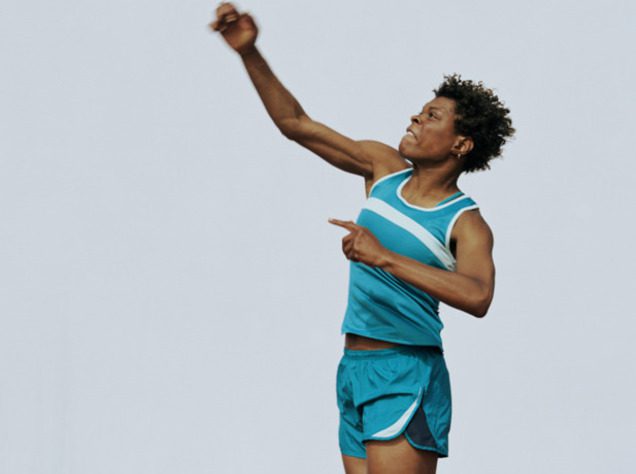The discus throw is one of the most famous events in track and field and was part of the ancient Greek pentathlon. The sport involves tossing a heavy disc, called a discus, as far as possible. Although the concept is simple, the technique is not easy to master. For track and field athletes to compete at the highest levels, they need to know how to throw the discus correctly. The throwing technique mastered by the top discus throwers in the world involves grip, rotation, and release.
(The following is designated for right-handers)
Grip
The technique for throwing discuses is very different from any other athletic throw. To grip the discus, throwers need to spread their fingers out and around the discus with each finger’s first knuckle over the edges to hold it. The index finger should be in line with the thrower’s wrist, while the thumb is excluded from the gripping and is used for balance.
Rotation
The rotation is the most important yet also the most difficult part of the discus throw.
1. Begin facing away from the direction of your target in a starting stance. Stand with legs staggered, spread slightly wider than shoulder-width apart, and knees bent.
2. The lead up to the rotation involves one or two swings of the arms back and forth without foot movement. This motion helps establish a rhythm for your footwork.
3. Bring your throwing arm back behind your right shoulder as far as possible, with the non-throwing hand in the opposite direction. This motion can be compared to a backswing in golf. Weight should be placed on the right foot with the left foot ready to pivot.
4. Next, start to pivot on the balls of your left foot, while simultaneously swinging your shoulders to the left. The right foot is lifted off the ground, and the spinning begins.
5. As you face the target direction, you should jump-turn off of your left foot to land on your right foot in the middle of the circle. The rotation will continue while this foot is planted.
6. The left foot will follow the right as the turn is completed and should end up planted directly in front of the right foot. The left foot will be pointed towards the direction of the throw because when you once again face the target direction, you will release the discus.
Although throwers complete one and a half turns (and often more turning after the throw), they are always be moving in the direction of the target. The rotation sounds complicated because it is! Properly rotating your body to maximize power takes a lot of practice.
Release
Once the rotation is complete, athletes need to properly release the disc. The rotation will create a clockwise spinning motion on the discus as it leaves the hand. By squeezing it out of your hands, you release the centrifugal force created by the body’s’ spinning motion, propelling the discus away from you. The discus should leave your hand off of your index finger.
Huddle Up
Mastering the discus throw is a difficult task, even for very experienced track and field athletes. Learning to throw in a stationary motion can be a good stepping stone to greatness, and implementing effective training drills can increase comfort with all the motions involved in throwing. With proper technique and lots of practice, anyone can become a great discus thrower.
How useful was this post?
Click on a star to rate it!
Average rating 4.2 / 5. Vote count: 106
No votes so far! Be the first to rate this post.




One Response
Amazing